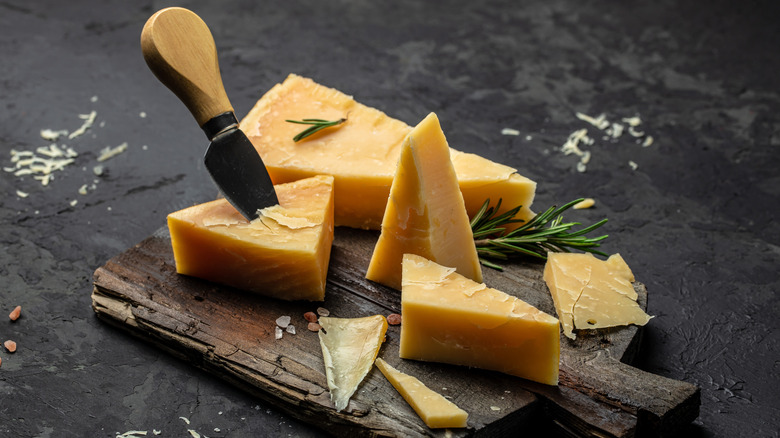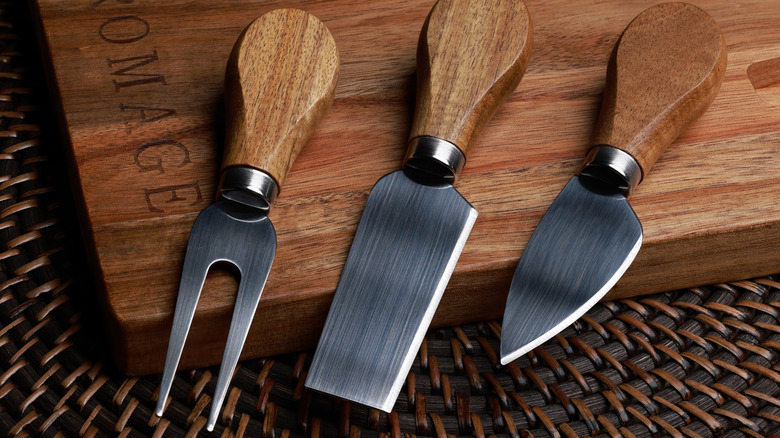Why The Cheese Knife You Use Matters
It's easy to understand all the hoopla surrounding charcuterie boards. Beautiful wood-grain boards, salami roses, and fancy cheeses – what's not to love? You artfully arrange the prosciutto, drop a round of creamy brie beside a mountain of crackers, and leave your guests to enjoy. But as it turns out, that butter knife is absolutely butchering the brie, and that steak knife is making the blue cheese crumble right off the table. This is why cheese knives serve a purpose, beyond looking bougie on your backsplash.
Before you go shopping for a six-piece set of cheese knives, it's important to begin with a foundational knowledge of cheeses. Depending on the moisture content of the cheese, the dairy can have varying textures: hard, semi-hard, semi-soft, or soft. The more moisture there is in a block of cheese, the softer it will be, and vice versa.
Hard cheeses have a moisture content of below 50%, and include options such as parmesan, Pecorino Romano, or asiago. Soft cheeses are those like ricotta, mascarpone, and Taleggio. The texture will let you know which specific cheese knife you need to use to cut through it.
Use the right knives for hard and soft cheeses
When it comes to slicing hard cheeses cleanly, there are a few options. A spade knife is well-known for its ability to slice parmesan cheese or pecorino, and you can use a one-or two-handled hard cheese knife for many hard varieties. A little cheese cleaver is useful for semi-hard types, and is also visually appealing. Cheese wires make clean work of blocks of semi-hard cheeses like provolone and Gruyère, too, but can also be used for some semi-soft varieties. And a two-pronged cheese fork is a handy addition to your board, as it's great for picking up all sorts of cheeses.
For soft cheeses, you'll need a soft cheese knife – a long, thin blade with holes in so the dairy doesn't stick to the metal. A slim-blade knife is ideal for sticky cheeses like halloumi, while a pronged knife helps to pick up semi-soft cheeses such as Muenster. A spreader can be useful for very soft varieties. And fans of blue cheese might find it helpful to serve it with a dedicated stilton scoop.
Whether you're craving a chunk of fresh mozzarella or a stiff slice of Parmigiano-Reggiano, selecting the right knife can make a world of difference in your cheese experience. And using different knives for each cheese will also reduce the risk of cross-contamination, too. All you need to remember now is how to cut cheese the right way.

